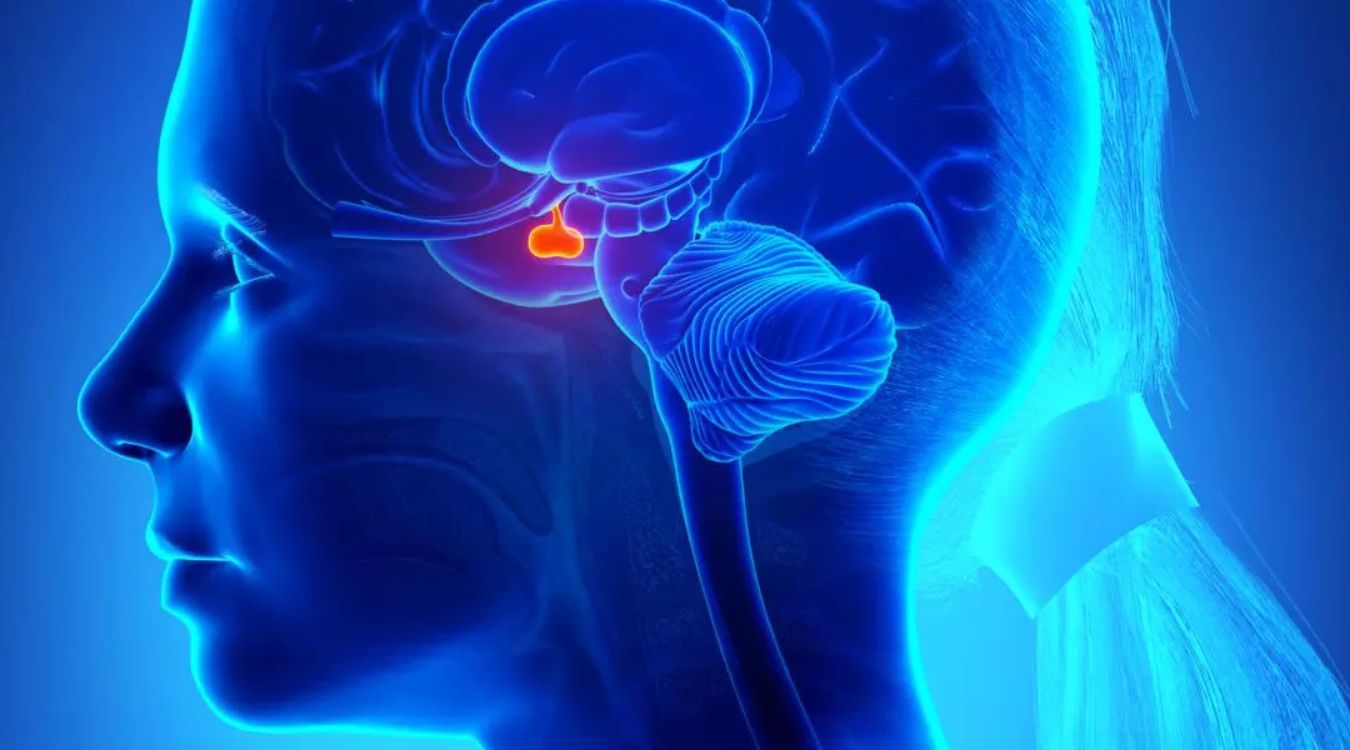
Ahumada–Del Castillo Syndrome is a rare condition that affects the endocrine system, specifically the pituitary gland. This syndrome primarily impacts women, leading to symptoms like amenorrhea (absence of menstrual periods) and galactorrhea (unexpected milk production). Understanding Ahumada–Del Castillo Syndrome is crucial for those affected, as it can significantly influence daily life and overall health. This condition often goes undiagnosed due to its rarity, making awareness essential. In this blog post, we will delve into 30 intriguing facts about Ahumada–Del Castillo Syndrome, shedding light on its causes, symptoms, diagnosis, and treatment options. Whether you're a medical professional, a patient, or simply curious, these facts will provide valuable insights into this uncommon yet impactful syndrome.
Key Takeaways:
- Ahumada–Del Castillo Syndrome causes lactation without pregnancy and menstrual absence in women. Early diagnosis and treatment can help manage symptoms and improve quality of life.
- Treatment options for Ahumada–Del Castillo Syndrome include medications, surgery, radiation therapy, and lifestyle changes. Regular monitoring and support groups are important for managing the condition.
What is Ahumada–Del Castillo Syndrome?
Ahumada–Del Castillo Syndrome, also known as Forbes-Albright syndrome, is a rare endocrine disorder. It primarily affects women, causing lactation without pregnancy and the absence of menstrual periods. This condition is linked to the pituitary gland, which plays a crucial role in hormone regulation.
Symptoms of Ahumada–Del Castillo Syndrome
Understanding the symptoms can help in early detection and treatment. Here are some key symptoms associated with this syndrome:
- Galactorrhea: This is the spontaneous flow of milk from the breast, unrelated to childbirth or nursing.
- Amenorrhea: Women with this syndrome often experience the absence of menstrual periods.
- Infertility: Due to hormonal imbalances, affected women may face difficulties in conceiving.
- Headaches: Persistent headaches can occur due to pituitary gland abnormalities.
- Visual disturbances: Tumors in the pituitary gland can press on the optic nerves, leading to vision problems.
Causes of Ahumada–Del Castillo Syndrome
The exact cause of Ahumada–Del Castillo Syndrome is not always clear. However, several factors can contribute to its development:
- Pituitary tumors: Benign tumors in the pituitary gland can disrupt hormone production.
- Hypothyroidism: An underactive thyroid can lead to hormonal imbalances that trigger this syndrome.
- Medications: Certain drugs, like antipsychotics, can affect prolactin levels, leading to symptoms.
- Chronic kidney disease: This condition can alter hormone levels, contributing to the syndrome.
- Stress: High stress levels can impact hormone production and regulation.
Diagnosis of Ahumada–Del Castillo Syndrome
Diagnosing this syndrome involves several steps to rule out other conditions and confirm the presence of hormonal imbalances:
- Medical history: A thorough review of the patient's medical history is essential.
- Physical examination: Doctors check for physical signs like breast discharge and other symptoms.
- Blood tests: These tests measure hormone levels, particularly prolactin.
- MRI scans: Imaging tests like MRI can detect pituitary tumors or abnormalities.
- Thyroid function tests: These tests help rule out hypothyroidism as a cause.
Treatment Options for Ahumada–Del Castillo Syndrome
Treatment focuses on addressing the underlying cause and managing symptoms. Here are some common approaches:
- Medications: Drugs like dopamine agonists can reduce prolactin levels.
- Surgery: In cases of pituitary tumors, surgical removal may be necessary.
- Radiation therapy: This can be an option for tumors that cannot be surgically removed.
- Hormone replacement therapy: For those with hypothyroidism, thyroid hormone replacement can help.
- Lifestyle changes: Reducing stress and maintaining a healthy lifestyle can support treatment.
Prognosis and Living with Ahumada–Del Castillo Syndrome
Living with this syndrome can be challenging, but with proper treatment, many people lead normal lives. Here are some important points about prognosis and daily life:
- Regular monitoring: Ongoing medical check-ups are crucial to manage the condition.
- Support groups: Joining support groups can provide emotional and practical support.
- Fertility treatments: For those facing infertility, treatments like IVF may be an option.
- Mental health: Addressing mental health is important, as chronic conditions can impact emotional well-being.
- Education: Learning about the condition helps patients make informed decisions about their health.
Interesting Facts about Ahumada–Del Castillo Syndrome
Here are some intriguing facts that shed more light on this rare condition:
- Named after doctors: The syndrome is named after Dr. Ahumada and Dr. Del Castillo, who first described it.
- Rare occurrence: It is extremely rare, with only a few hundred cases reported worldwide.
- Affects women more: While it can occur in men, it predominantly affects women.
- Historical cases: Some historical medical cases suggest the syndrome has been around for centuries.
- Research ongoing: Scientists continue to study this syndrome to better understand its causes and improve treatments.
Final Thoughts on Ahumada–Del Castillo Syndrome
Ahumada–Del Castillo Syndrome, though rare, has significant implications for those affected. Understanding its symptoms like amenorrhea and galactorrhea can lead to quicker diagnosis and treatment. Hormonal imbalances play a crucial role, often requiring medication or surgery. Early detection can improve quality of life, making awareness vital.
Research continues to evolve, offering hope for better management. Support groups and medical professionals provide essential resources. Staying informed empowers patients and families to navigate this condition more effectively.
If you or someone you know shows signs, consult a healthcare provider. Knowledge is power, and being proactive can make all the difference. Keep learning, stay vigilant, and support those on this journey.
Frequently Asked Questions
Was this page helpful?
Our commitment to delivering trustworthy and engaging content is at the heart of what we do. Each fact on our site is contributed by real users like you, bringing a wealth of diverse insights and information. To ensure the highest standards of accuracy and reliability, our dedicated editors meticulously review each submission. This process guarantees that the facts we share are not only fascinating but also credible. Trust in our commitment to quality and authenticity as you explore and learn with us.
